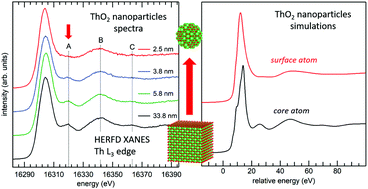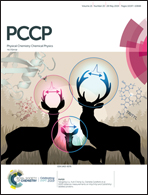Understanding the size effects on the electronic structure of ThO2 nanoparticles†
Abstract
Developing characterization techniques and analysis methods adapted to the investigation of nanoparticles (NPs) is of fundamental importance considering the role of these materials in many fields of research. The study of actinide based NPs, despite their environmental relevance, is still underdeveloped compared to that of NPs based on stable and lighter elements. We present here an investigation of ThO2 NPs performed with High-Energy Resolution Fluorescence Detected (HERFD) X-ray Absorption Near-Edge Structure (XANES) and with ab initio XANES simulations. The first post-edge feature of Th L3 edge HERFD XANES disappears in small NPs and simulations considering non-relaxed structural models reproduce the trends observed in experimental data. Inspection of the simulations of Th atoms in the core and on the surface of the NP indeed demonstrates that the first post-edge feature is very sensitive to the lowering of the number of coordinating atoms and therefore to the more exposed Th atoms at the surface of the NP. The sensitivity of the L3 edge HERFD XANES to low coordinated atoms at the surface stems from the hybridization of the d-Density of States (DOS) of Th with both O and Th neighboring atoms. This may be a common feature to other oxide systems that can be exploited to investigate surface interactions.



 Please wait while we load your content...
Please wait while we load your content...